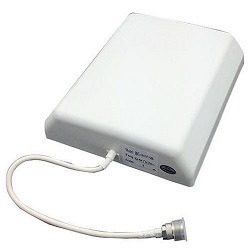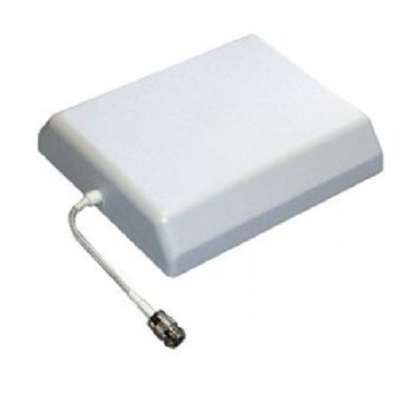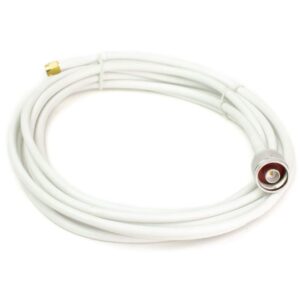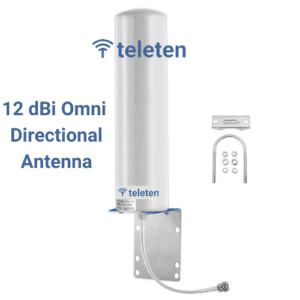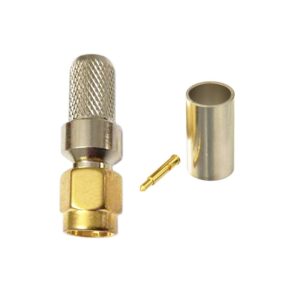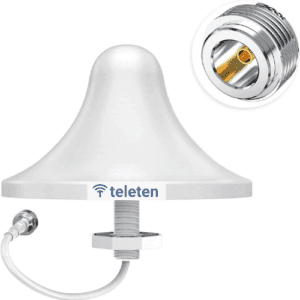Design Concept:
Patch Panel Antenna: This antenna type is known for its flat, rectangular or square shape, which allows for a compact and easy-to-mount design. The “patch” refers to the flat, printed or metal element on the substrate that acts as the radiating element.
Wide Frequency Range: Designed to cover a broad frequency range, making it suitable for multiple communication standards within the specified band.
Key Features:
Gain:
7 dBi Gain: Provides moderate to high signal amplification. This gain level is ideal for improving signal strength and coverage in various applications without being excessively directional.
Frequency Range:
800-2500 MHz: Encompasses multiple wireless communication bands, including cellular frequencies (e.g., 2G, 3G, 4G LTE) and Wi-Fi bands, allowing for versatile use across different technologies.
Radiation Pattern:
Directional or Semi-Directional: Typically, patch panel antennas have a more focused radiation pattern compared to omnidirectional antennas. This design helps in targeting specific areas or improving signal quality in a particular direction.
Construction:
Flat and Compact Design: The antenna is flat, making it easy to mount on surfaces like walls or ceilings. It is often built from materials such as fiberglass or plastic, with a metal element for the radiating part.
Durable and Weather-Resistant: Designed for durability, especially if intended for outdoor use, with weather-resistant finishes to withstand environmental conditions.
Design Specifications:
Frequency Range:
800-2500 MHz: Suitable for a variety of communication applications, including cellular networks, Wi-Fi, and other wireless technologies operating within this band.
Gain:
7 dBi Gain: Provides a good balance between signal amplification and coverage area. Higher gain improves signal strength over longer distances but may reduce the antenna’s coverage area compared to antennas with lower gain.
Size and Shape:
Compact and Flat: Typically rectangular or square with a slim profile. The exact dimensions can vary, but the design ensures that it can be easily integrated into various environments.
Connector Types:
Common Connectors: May include N-type, SMA, or other connectors, depending on the application and equipment requirements.
Installation:
Mounting:
Wall or Surface Mount: Designed to be mounted on walls, ceilings, or other surfaces using brackets or adhesive mounts. Ensure that the mounting surface is clean and smooth for optimal adhesion.
Orientation: For best performance, position the antenna so that it aligns with the direction of the coverage area or signal source.
Connection:
Coaxial Cable: Connect the antenna to the network equipment using the appropriate coaxial cable and connector. Ensure that connections are secure and properly weatherproofed if used outdoors.
Testing:
Coverage and Signal Strength: After installation, test the antenna to ensure it meets the desired coverage and performance. Adjust the placement or orientation if necessary to optimize signal strength.
Applications:
Cellular Networks: Useful in base stations, repeaters, and other network infrastructure to enhance signal coverage and strength.
Wi-Fi Networks: Can be employed to boost Wi-Fi coverage in specific areas, especially in environments with challenging signal propagation.
General Wireless Communication: Suitable for any application requiring coverage within the 800-2500 MHz frequency range.
Maintenance:
Regular Inspection: Periodically check the antenna and its connections for signs of wear, damage, or corrosion.
Cleaning: Keep the antenna clean and free from debris to ensure continued optimal performance.
Considerations:
Directional Characteristics: Although it has a relatively broad coverage pattern, the patch panel antenna is more directional compared to omnidirectional antennas. Ensure the installation is optimized for the intended coverage area.
Network Compatibility: Verify that the antenna’s specifications match the frequency bands and requirements of your network or application.
A patch panel antenna with 7 dBi gain and a frequency range of 800-2500 MHz is an effective solution for improving signal coverage and strength in various wireless communication applications.

